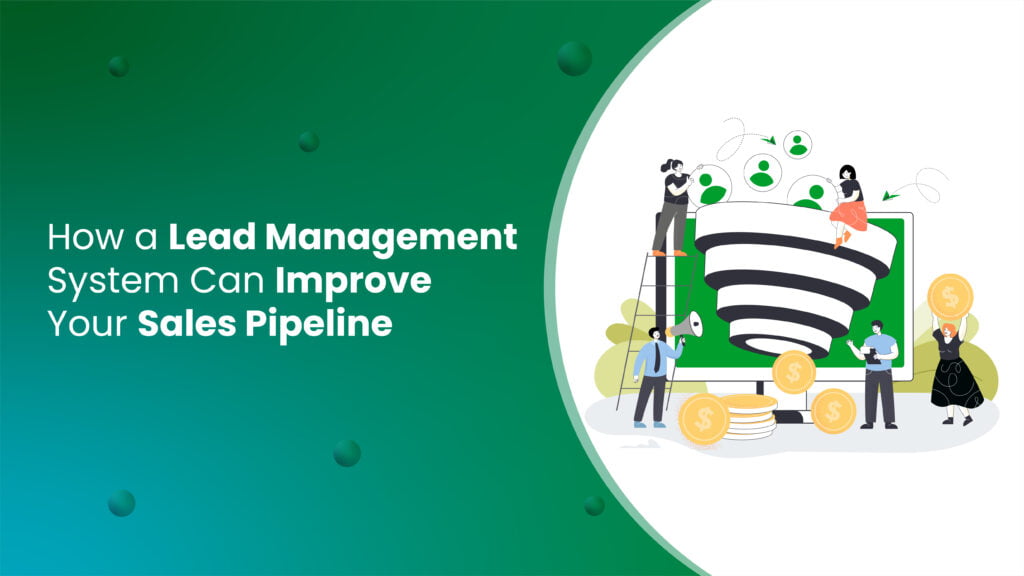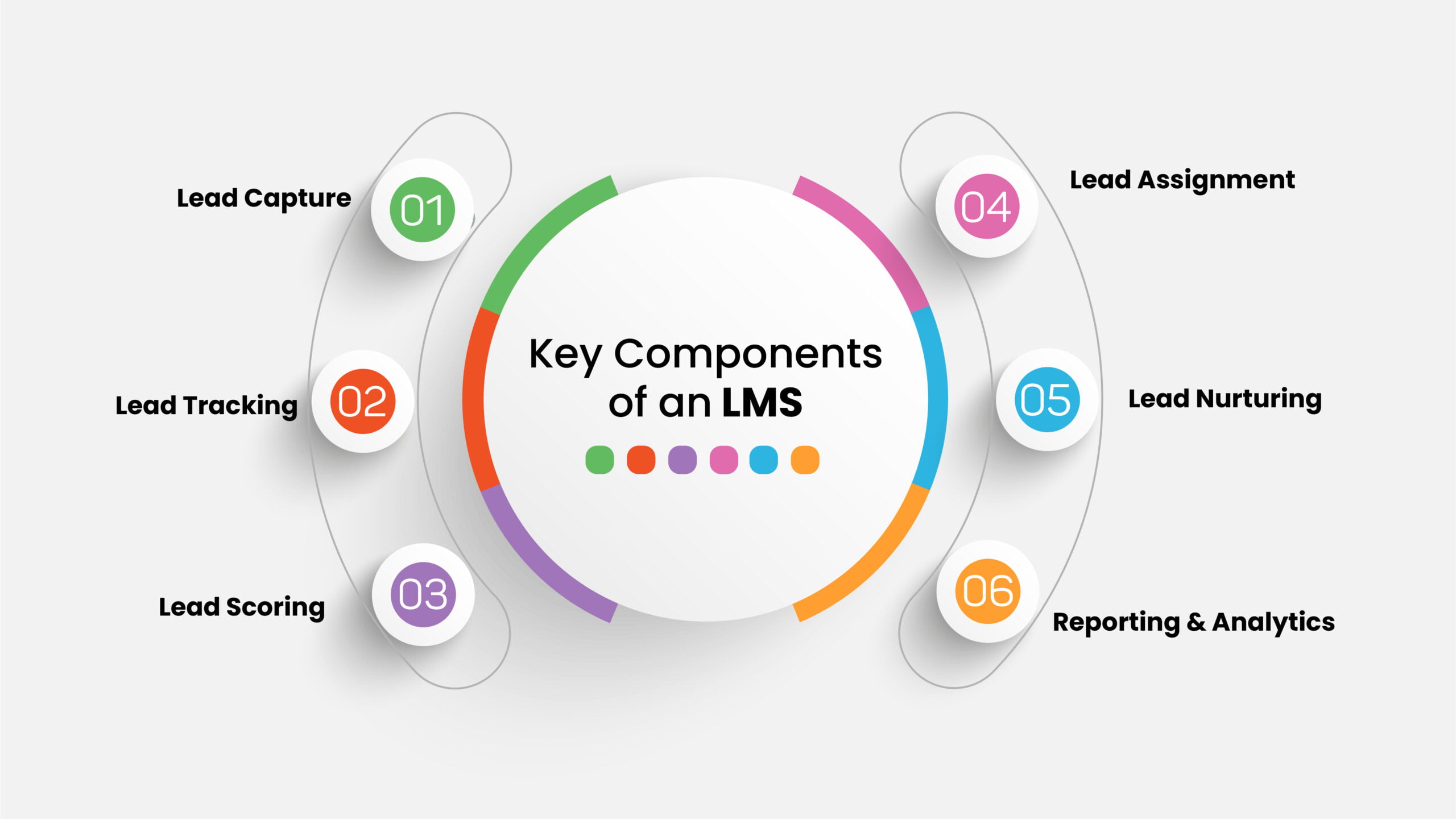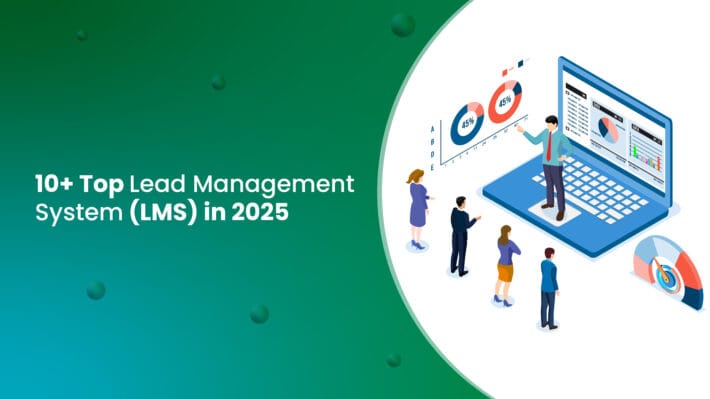How a Lead Management System Can Improve Your Sales Pipeline

A sales pipeline is the process that leads go through, from initial contact to becoming a customer. It includes various stages like lead generation, follow-up, nurturing, and closing deals. Managing this pipeline effectively is key to driving sales growth.
However, many businesses face challenges when trying to manage their sales pipeline without the right tools. Leads can get lost, follow-ups are missed, and teams struggle to keep track of progress. This lack of organization can result in missed opportunities and lower conversion rates. This is why a Lead Management System (LMS) becomes essential. It makes managing your sales pipeline so much easier by organizing everything in one place.
In this blog, we’ll explain how a Lead Management System (LMS) can help businesses organize and improve their sales pipeline.
What is Lead Management System
Meaning of lead management system: A Lead Management System (LMS) is a tool that helps businesses organize, track, and manage their potential customers, called leads, throughout the sales process. It makes sure that every lead is properly handled from the moment they show interest in your product or service to when they become a paying customer.
Key Components of an LMS:

- Lead Capture: Automatically collects leads from different sources like your website, social media, or email campaigns.
- Lead Tracking: Keeps a record of every interaction with your leads, so you always know where they are in the sales journey.
- Lead Scoring: Helps prioritize leads by assigning them a score based on their level of interest or engagement.
- Lead Assignment: Automatically assigns leads to the right sales reps, so follow-ups happen faster.
- Lead Nurturing: Automates personalized emails or messages to keep leads engaged and move them closer to a purchase.
- Reporting & Analytics: Tracks how leads move through the pipeline and shows which strategies are working or need improvement.
LMS vs. CRM:
While a CRM (Customer Relationship Management) system manages all aspects of customer relationships (like support and marketing), a Lead Management System focuses specifically on handling leads before they become customers. CRM is broader, while LMS is designed to improve the sales process by efficiently managing potential customers.
Common Sales Pipeline Challenges
Many businesses face challenges in keeping their sales pipeline running smoothly. Here are some of the most common issues:
Disorganized Lead Tracking and Follow-Up
Without a proper system, it’s easy to lose track of leads. Sales teams might forget to follow up on time, or leads can slip through the cracks, costing potential sales.
Difficulty Identifying High-Priority Leads
Not all leads are equally valuable. Some are more likely to make a purchase, while others might not be as interested. Without a clear way to prioritize, businesses waste time on low-quality leads, missing out on the ones ready to buy.
Poor Lead Nurturing and Lead Leakage
Leads need consistent communication and engagement to stay interested. If businesses fail to nurture leads properly, they can lose interest and drop out of the pipeline altogether, known as lead leakage.
Inefficiency in Communication and Collaboration
When sales teams don’t have the right tools for communicating and collaborating, things get messy. Emails get lost, important updates aren’t shared, and the whole process slows down, making it harder to close deals efficiently.
These challenges can greatly impact the success of a sales pipeline, but with the right tools, like a Lead Management System, they can be overcome easily.
How a Lead Management System Can Improve Your Sales Pipeline
A Lead Management System (LMS) makes managing your sales pipeline easier and more effective. Here’s how it helps in simple terms:
A. Better Lead Tracking and Visibility
An LMS like SalesTown provides a single place where you can capture and keep track of all your leads. It helps you organize them by categories and stages, so you always know where each lead is in the sales process. This makes it easier to see how things are progressing and avoid losing track of any leads.
B. Automating Lead Scoring and Prioritization
leads are automatically scored based on how interested they are, their background, and other factors. This means you can easily see which leads are most likely to buy and focus your efforts on them. It helps you use your resources more effectively by prioritizing high-quality leads.
C. Enhanced Communication and Follow-up
An LMS can set up automatic reminders for you to follow up with leads at the right time. It also integrates with email, SMS, and WhatsApp, making communication with leads smoother and more efficient. This ensures that no lead is left waiting or forgotten.
D. Efficient Lead Nurturing
You can use an LMS to automatically send out emails or messages that keep leads interested and engaged. It helps provide your sales team with all the information they need to nurture leads effectively, so they stay interested and move closer to making a purchase.
E. Data-Driven Decision Making
An LMS tracks how well your leads are performing and where there might be problems. It gives you insights and reports that help you understand what’s working and what isn’t. This allows you to adjust your strategies based on real-time data to improve your sales process.
Key Features to Look for in a Lead Management System
When choosing a Lead Management System (LMS), here are some essential features to consider:
1. Lead Capture and Import Tools
Make sure the system can easily collect and import leads from various sources like your website, social media, and email campaigns. This helps you gather all your leads in one place without manual data entry.
2. Lead Scoring and Distribution
Look for features that automatically score leads based on their interest and engagement. The system should also distribute leads to the appropriate sales reps based on their criteria, ensuring that high-priority leads get timely attention.
3. Sales Pipeline Visualization
The system should provide a clear view of your sales pipeline, showing each lead’s stage in the process. This helps you track progress and identify where leads are getting stuck, so you can take action to move them forward.
4. Automation (Welcome Email, Follow-Up Reminder)
Choose an LMS that automates key tasks like sending welcome emails to new leads and setting up follow-up reminders. This saves time and ensures consistent communication with leads.
5. Reporting and Analytics
Look for robust reporting and analytics tools that give you insights into lead performance, sales activities, and pipeline metrics. This helps you make data-driven decisions and optimize your sales strategies.
Wrapping Up
So in a nutshell, a good Lead Management System can make a real difference for your sales team. It keeps all your leads organized in one place, so you never lose track of potential customers. Plus, it helps you prioritize the hottest leads and automate all that follow-up outreach, so your reps can focus on closing deals, not chasing leads.
If you’re looking for LMS, I recommend exploring SalesTown – a leading LMS solution. Book a demo with our team to see how SalesTown can transform your sales operations. Alternatively, you can visit our website to learn more about our features and how we can help your business grow.
Happy learning!🫠
Frequently Asked Questions (FAQs)
Q1. How a Lead Management System Can Improve Your Sales?



